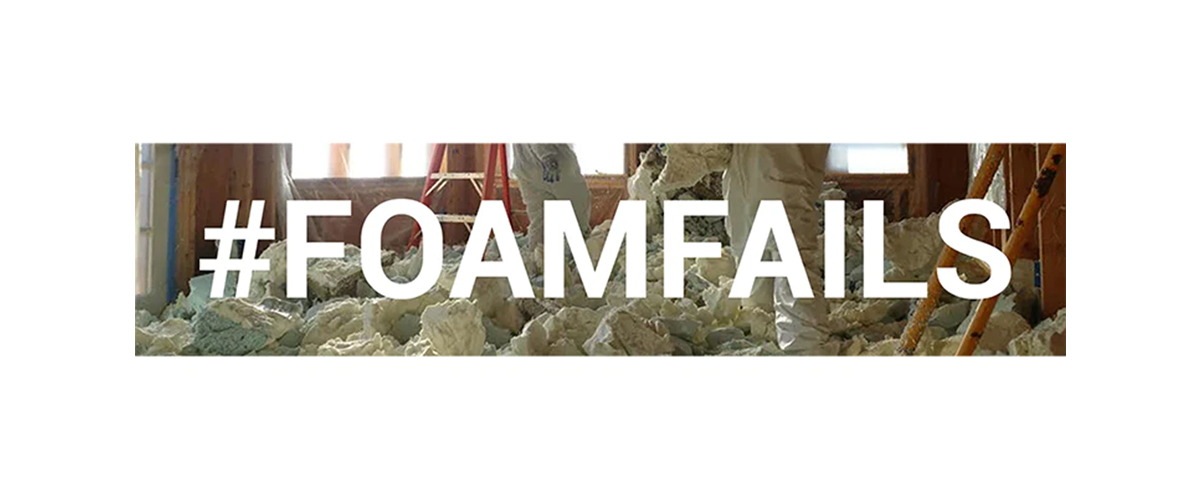Introduction to 475's Foam Fails Series
If we are to address our concerns of health, climate change, safety, energy efficiency, resiliencey, and reliability, then we ask you to seriously consider eliminating foam from your next high performance building enclosure.
Why should you contemplate a foam free enclosure? Because foam fails. Let us consider the ways foam has failed*:
- Dangerous toxic ingredients
- Unacceptable fire hazard
- Degrading thermal insulation values
- Counterproductive vapour retarder/barrier
- Excessive shrinkage
- Inflexible and prone to cracking
- Unhealthy off-gassing & dust
- Hypersensitive on-site manufacturing
- Difficult to identify and repair air leaks
- Weak and unpredictable air control
- Irredeemable global warming potential
- Intolerant of adverse job site conditions
- Terribly hygrophobic
Admittedly, this list may cause disorientation - given the near sacrosanct position foam currently holds in the high-performance construction industry. In future blog posts (linked above as we go) we’ll explore the inherent failures of foam, as listed above, giving each a proper explanation and context. We can do better. Find out how.
* Note: List order is in flux per writing flow. However, the the original thirteen reasons remain. The order is not necessarily an indication of relative importance.



